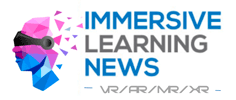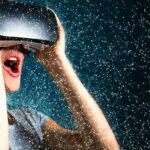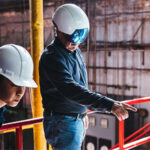“The technology and hardware is finally coming of age and VR and AR have the potential to provide a significant boost to the global economy, and also improve the way organisations operate, make processes faster and more effective, educate people more effectively and create incredible user experiences.” – Jeremy Dalton, Head of Virtual Reality and Augmented Reality, PwC UK
The pandemic caused major disruption in multiple industries, including the L&D sector. We’ve seen a massive shift to video conferencing tools and online learning platforms when risks and restrictions emerged in 2020. Today, some organizations are still looking for innovative ways to deliver and improve virtual learning experiences.
Virtual and augmented reality offer capabilities that traditional e-learning tools are unable to. XR can deliver immersive and interactive experiences that are likely to meet the quality of learning in physical contexts.
Listed below are various applications of AR and VR in education and workforce development.
1. Task simulations
Complex, detail-oriented tasks require repetitive, hands-on training to be learned and mastered. Immersive technologies can provide a 3D environment where the user can interact with virtual elements the same way they would in the real world. This capability allows trainees to experience specific scenarios from across multiple devices, with precision and powerful graphics.
With the capacity to deliver immersive, hands-on experiences, XR has a strong potential to boost employee performance at a faster rate.
“Compared to traditional training, VR-based training can reduce training time by 40 percent, and improve employee performance by a whopping 70 percent.”
SOURCE: IBM EXPERT INSIGHTS – AR AND VR IN THE WORKPLACE
2. Face to face training in virtual environments
Virtual and augmented reality can provide a ‘virtual workspace’ and facilitate face-to-face communication more effectively compared to phone calls and video meetings. With a 3D environment and lifelike avatars, this technology can heighten user presence and enable an authentic shared experience.
“I can high-five team members in virtual reality,” said Tim Mauri, Director – The Johnson & Johnson Institute. “After having had limited human contact for weeks, this is a convincing experience of being with other people and getting work done.”
In addition, VR environments can let employees experience a ‘normal day’ at work, even with travel restrictions in place.
Some VR-equipped teams report that they now require 90% less travel
SOURCE: HARVARD BUSINESS REVIEW – Using VR to Unlock the Power of Remote Collaboration
3. Immersive personalized online training paths
Virtual and augmented reality can enhance training programs by providing an immersive self-directed learning experience. XR enables learners to access specific environments and scenarios from any device, wherever they are. These users can navigate their way through an instruction-led training path at their own pace, and conduct unlimited redo’s.
This capability significantly reduces travel and trainer expenses and eliminates the need for tedious set-ups and operational shutdowns.
4. Product training
Immersive technologies can deliver a hands-on training experience where users can review and navigate digital replicas in a 3D environment. XR can simulate not only the form of a product but also its functionalities. This capability enables training professionals to visualize complex products in great detail and complexity and present more effectively to employees.
5. Employee onboarding
Studies have shown that employee onboarding has a direct correlation to job satisfaction and employee retention.
From VR-enabled gamification to virtual team assimilation, XR can transform the tedious, drawn-out onboarding process into an engaging and highly personalized experience. These programs will not only increase employee satisfaction but also confidence in skill application.
According to a PwC study, VR learners are 27% more confident to apply skills learned after training – a 35% improvement over e-learning.
Quelle:
Foto: Prior to the pandemic, PwC has already predicted the exponential growth of VR and AR with the potential to deliver a £1.5 trillion boost to the global economy by 2030.



